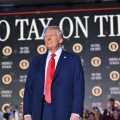Billionaire investor Ray Dalio recently issued a stark warning about the US bond market, citing the nation’s soaring debt and deficits as a major cause for concern. Speaking at a Paley Media Council event in New York, Dalio, founder of Bridgewater Associates, expressed his apprehension, likening the situation to a doctor diagnosing a critically ill patient. He emphasized the seriousness of the accumulating debt and predicted a potential crisis within the next few years, with a margin of error of a year or two on either side.
Dalio’s concerns are not new; he’s been sounding the alarm about the ballooning US deficit for years. Recently, this concern has manifested in the market, with investors demanding lower prices for government bonds – a direct consequence of the massive budget deficits. This trend has driven up yields on the debt, and the escalating worries culminated in a high-profile credit rating downgrade from Moody’s last week.
The 30-year Treasury yield recently hit levels unseen since 2023, reaching approximately 5.14%. This rise in financing costs, coupled with continued spending growth and declining tax revenues, has sent deficits spiraling, pushing the national debt past the $36 trillion mark. In 2024, interest payments alone surpassed all other government expenditures except for Social Security, defense, and healthcare. Dalio pointed out that the projected deficit of roughly 6.5% of GDP is unsustainable.
Adding fuel to the fire, the House of Representatives recently approved legislation that lowers taxes and increases military spending. This bill, now heading to the Senate, is projected to add trillions to the national debt and further widen the deficit. This comes at a time when fears of inflation, potentially exacerbated by higher tariffs, are already impacting bond prices and yields.
Dalio expressed pessimism about the political will to address the issue, citing the challenges of bipartisan cooperation and the tendency for political maneuvering to prioritize increased spending over debt reduction. He concluded that the inherent challenges of navigating political hurdles and achieving bipartisanship create a significant obstacle to tackling the debt crisis effectively. His message is clear: the current trajectory is unsustainable and the bond market should be viewed with considerable caution.










